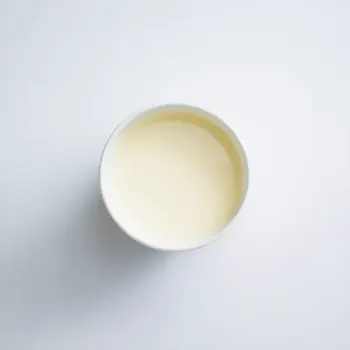Eggs and buttermilk are essential ingredients in cooking, each with unique roles in enhancing texture, flavor, and nutrition in recipes, from baking to marinades and sauces.

Eggs are a versatile ingredient, fundamental in both sweet and savory cooking. They're rich in protein and contain essential amino acids, serving as binders, leavening agents, and enriching elements in countless recipes.

Buttermilk is a tangy dairy product, traditionally the liquid left behind after churning butter from cream. Today, it's commercially made by adding bacteria to low-fat milk. It's known for its ability to tenderize and add moisture to baked goods.
Eggs and buttermilk differ significantly in taste, texture, and source. Eggs have a mild, slightly savory flavor that can be used as a main ingredient or to complement other flavors. Buttermilk is tangy and adds a subtle sharpness to dishes. Texture-wise, eggs can be manipulated into various forms, from fluffy to firm, while buttermilk is consistently liquid. Eggs come from poultry, while buttermilk is a dairy product.

Your ultimate Recipe Box, Meal Planner, and Cooking Class all in one
In recipes like cakes, cookies, and custards, eggs provide structure and stability. They're essential in dishes like soufflés and meringues for their leavening properties. Expect a rich texture when using eggs in your baking. Buttermilk is best used in recipes like pancakes, scones, and biscuits, where it reacts with baking soda to provide lift. Its acidity tenderizes gluten, yielding a softer texture. Buttermilk contributes a tangy flavor that balances the sweetness in baked goods.
Eggs are less commonly used in marinades but can be used to create a binding layer for breadcrumbs on meats. They help to achieve a crispy outer crust when fried. Buttermilk's acidity makes it an excellent marinade for tenderizing chicken and other meats. Its enzymes break down proteins, resulting in juicier and more flavorful dishes after cooking.
Eggs, particularly yolks, are used in emulsifying dressings like Caesar and in sauces such as hollandaise. They provide a creamy texture and rich flavor. Buttermilk offers a lighter, tangy alternative for dressings like ranch or for adding a twist to traditional vinaigrettes. It's also used in creamy sauces where its tanginess cuts through the richness.
Eggs are an excellent source of high-quality protein and vitamins, while buttermilk is lower in fat and contains probiotics.
| Nutrient | Eggs ( per 100g ) | Buttermilk ( per 100g ) |
|---|---|---|
| Fat | 11g | 0.9g |
| Sodium | 124mg | 105mg |
| Calcium | 50mg | 116mg |
| Protein | 13g | 3.3g |
| Calories | 155 | 40 |
| Carbohydrates | 1.1g | 4.8g |
You can use buttermilk to add moisture in cakes, but it won't provide the same binding or leavening properties as eggs. You may need to adjust other ingredients accordingly.
Some recipes benefit from the binding and structural qualities of eggs as well as the tenderness and flavor that buttermilk provides, creating a balanced texture and taste.
Buttermilk can tenderize and add flavor to vegetarian proteins like tofu or tempeh, making it a versatile marinade option.
Yes, you can make a buttermilk substitute by adding a tablespoon of lemon juice or vinegar to a cup of milk and letting it sit for about 10 minutes.
Eggs contain more protein and essential vitamins, making them a nutrient-dense choice. However, buttermilk is lower in fat and calories and can be easier to digest due to its probiotic content.